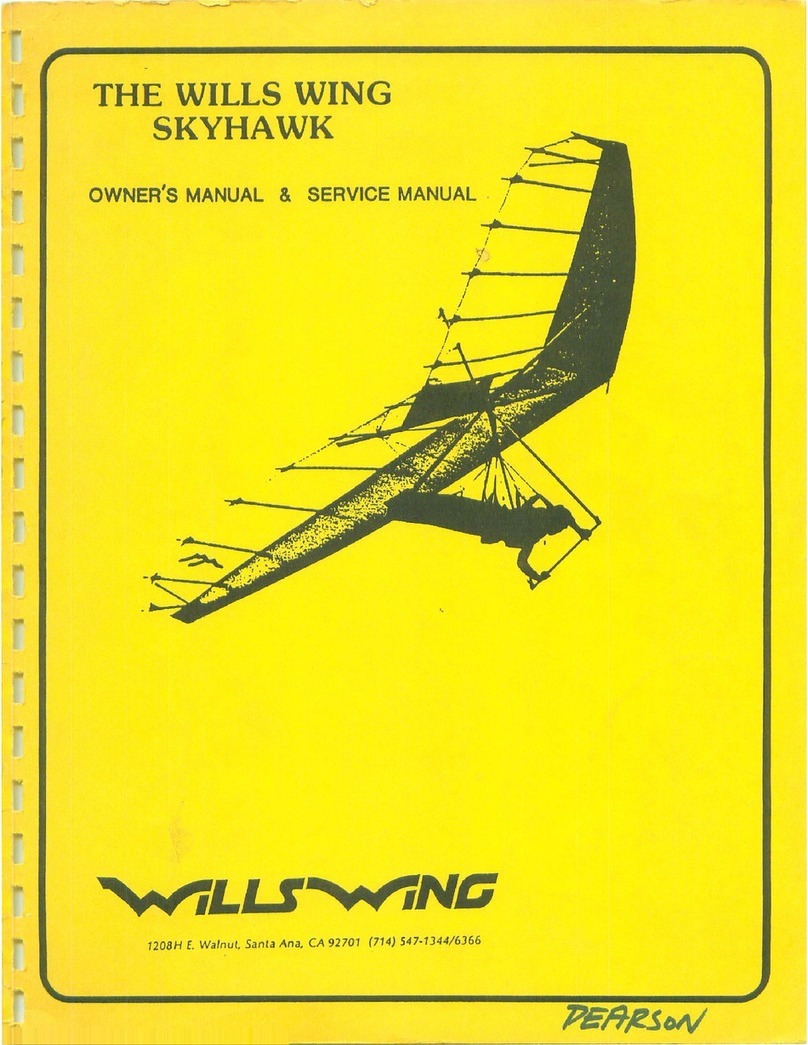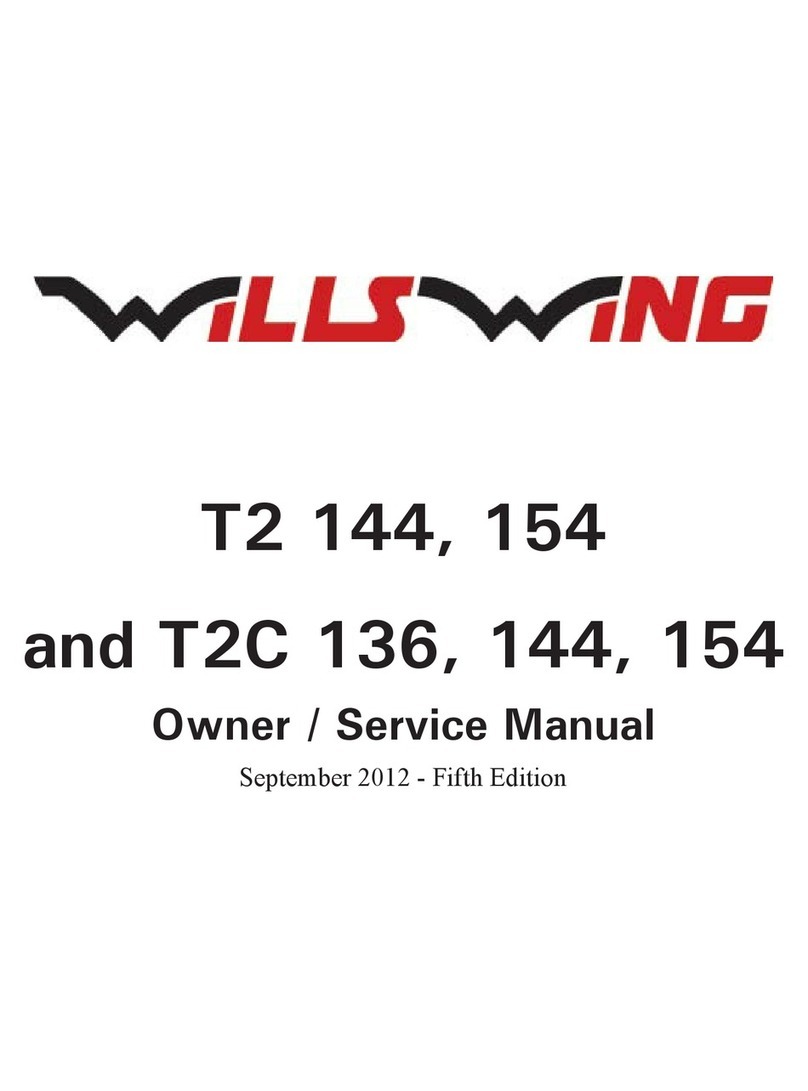
It is suggested that the instructor should fly the Condor, both from the training hill, and from a higher
launch, in mild conditions, in order to become familiar with the glider’s flight characteristics. Operat-
ing limitations for the student pilot should be significantly more restricted than those under which the
instructor would operate for the purposes of becoming familiar with the glider. Still, the instructor
needs to be aware of significant areas of caution in the operation of the glider as the Condor does not
meet normal utility class airworthiness standards.
For the launch phase of flight, the glider generally balances well, retains a suitable pitch attitude
during the brief launch run, and leaves the ground within a few steps even in light or no wind.
In wings level flight, the Condor exhibits flight characteristics typical of a large single surface glider
with ample sail billow. The roll rate is slow and highly damped, though initial response in smooth air
is relatively immediate. Pitch response is damped, and pitch pressures on either side of trim are high.
We recommend trimming the glider for flight at the speed the instructor wants the student to fly. In
our experience a trim speed of 15-18 mph works best. Trim speed increases with increasing bank
angle, and for this reason it is best to limit operation to shallow bank angles, especially for students.
In a 20-degree bank, you can expect a trim speed increase of 3 to 5 mph. Beyond 45 degrees of bank,
the glider can become significantly roll unstable, and develops an increasing nose down trim. During
recovery from a 45 degree banked turn, the can glider exhibit continued nose down trim and roll
instability resisting the recovery until the bank angle is reduced to about 25 degrees. We therefore
recommend that flight operation be strictly limited to bank angles of 25 degrees or less even during
operation by the instructor.
During landing there is relatively high back pressure on the bar during the flare.
The Condor 330 is a special purpose glider. It is not a utility class glider, and does not meet utility
class airworthiness standards. It utilizes a very lightweight structure and has very limited structural
capacity. It is most certainly not in any way suitable for tandem flight, nor for any abrupt maneuver-
ing. It is designed for solo flight only, within the placarded weight range, at very low altitudes above
the ground (no higher than you care to fall). It is designed for straight and level flight, with minimal
maneuvering. At no time should the bank angle be allowed to exceed 25 degrees, due to concerns
with roll and pitch instability at bank angles above 40 degrees.
Condor Vehicle Testing
The Condor is not certified to any airworthiness standards, nor does it meet general utility class
standards. We have conducted pitch tests and positive load tests on a three-component test vehicle
over a limited range of speeds, loads, and angles of attack.
In pitch tests at 15 mph, the Condor was shown to be stable over the entire tested angle of attack
range from plus 35 degrees to negative 18 degrees. In pitch tests at 22 mph, the Condor was shown to
be stable over the entire tested angle of attack range from plus 35 degrees to zero degrees. In pitch
tests at 28 to 32 mph, the Condor was shown to be stable over the entire tested angle of attack range
from plus 15 degrees to minus three degrees.
In positive load tests, the crossbar was observed to be approximately one foot out of column at the
maximum recorded load of 884 lbs (440 kg) at 32 mph (51 kph) with the glider at maximum lift angle
of attack, indicating that airframe structural failure was imminent. (There was no damage to the glider































